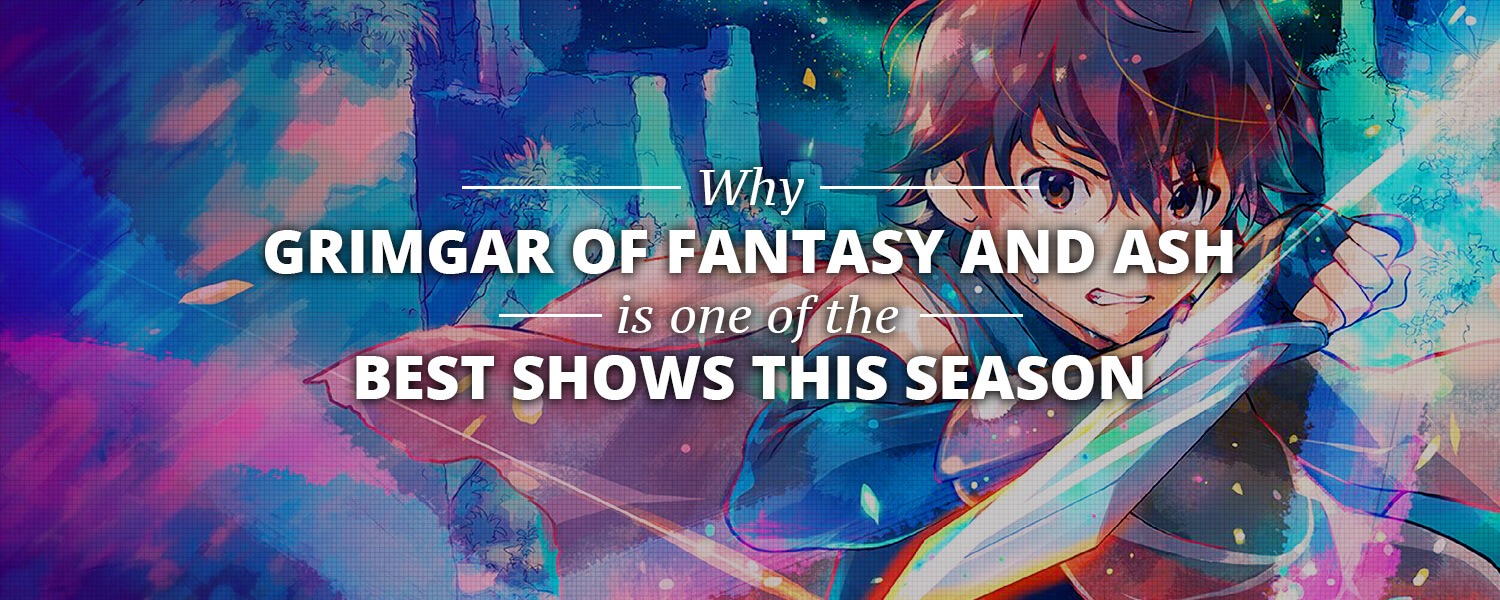This winter has been no slouch, weather AND anime-wise. The second season of Assassination Classroom is arguably just as entertaining as the first, GATE is firing on all cylinders, Dimension W is a whole-lot of sci-fi fun, and ERASED is the cinematic storyteller to start off 2016. Many of these were hotly anticipated entering January, and for good reason, but among them was another show that probably had many intrigued mostly by its aesthetic and production studio.
In case you haven’t guessed already, I’m talking about Grimgar of Fantasy and Ash, the latest light-novel adaptation from A-1 Pictures. One look at the PV and most people would probably tune in for a little while; it’s absolutely gorgeous. However, six episodes in, a slow pace and the lack of a large, central conflict might have caused some viewers to write it off. Also, its seems at first to have a video game setting, which may turn people off. If you’ve read the title for this, you can probably tell that I really like Grimgar of Fantasy and Ash. In fact, it’s one of my favorites of the season. Let me explain.
It’s not Sword Art Online
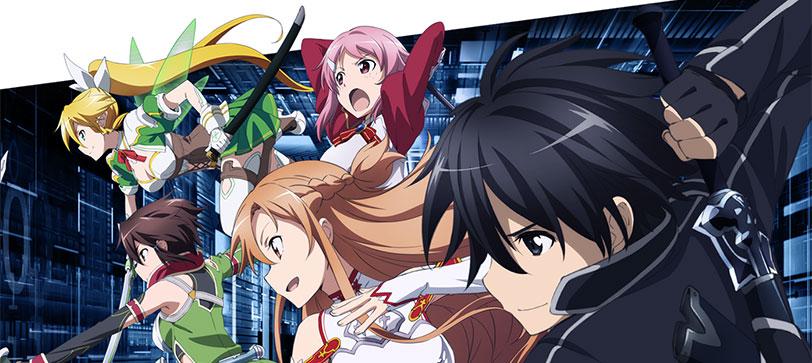
This isn’t a knock on Reki Kawahara’s best-selling, anime adapted, story, Sword Art Online. In fact, I’m a big fan of the show. People might agree that the Aincrad arc (the first 12-13 episodes) is by far the strongest of the series, and the rest is well… not up to par. (I don’t mind the other arcs, actually). But because of this outing, and other additions to the stuck-in-a-video-game genre (e.g., Log Horizon), some might have had their fill. At first glance, Grimgar of Fantasy and Ash falls into the same category, but after a few episodes, it’s clear this isn’t the case. I guess I should give a small taste of the premise.
One day, Haruhiro, the central protagonist, wakes up in the dark surrounded by people who have no memory of who they are and how they got there. Soon they come to learn they are in a world called ”Grimgar” and must join guilds and classes and survive against enemies to make a living. (Source: FUNImation)
Sounds like a video game, no? Guilds and classes, special abilities, it’s all straight out of an RPG. However, it’s soon made clear that this is not a game, as all of this is very real for them. A more accurate comparison for the setting of “Grimgar” may be the world of Is It Wrong to Try to Pick up Girls in a Dungeon? The two societies are very alike, with markets and guilds, and classes and parties.
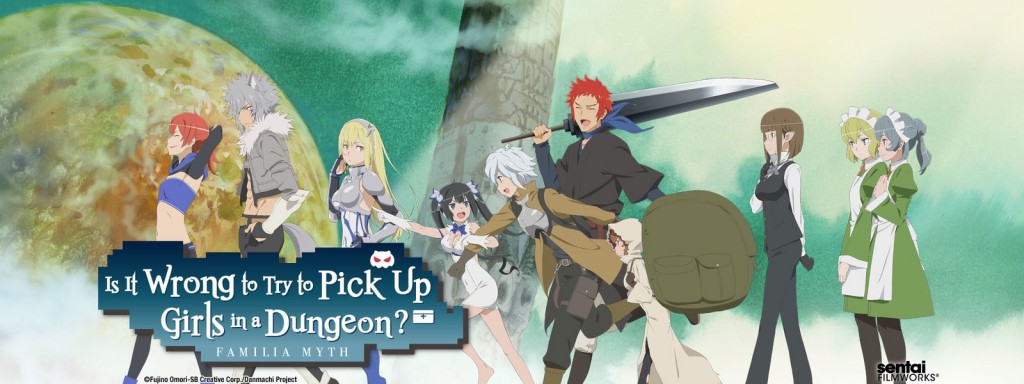
The comparison ends here though. Whereas characters from Dungeon are a lot more fantastical with epic abilities and such, Grimgar takes a more realistic approach. The characters learn quickly that this is no game, and every day is a constant struggle to fight off death. To compound this approach, there is a mystery set up in the first episode, and you can catch a glimpse in the small synopsis above; the characters have no memory of who they are, where they came from, or how they got there. Six episodes in, this has not been touched upon much, but small moments in each episode hint at a connection between the characters, a similar reason they all ended up in Grimgar. This is also an aspect to the story-telling structure that I greatly enjoy. There aren’t any huge information dumps, or long-winded back-story expositions. Instead, through actions, interactions, and the aforementioned hints, we get to know these characters in a more personal way. We are able to grow with them. You could actually attribute this to the next big reason I like this show so much.
It’s All In The Details
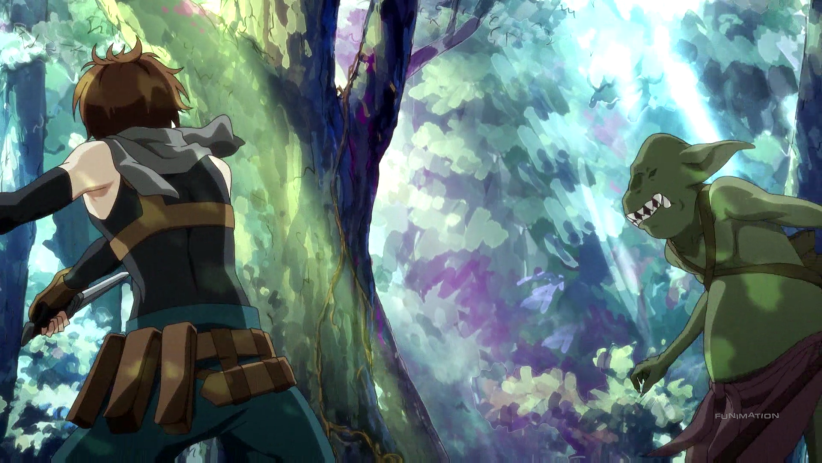
As I mentioned before, Grimgar takes a fairly more realistic approach to its fantasy setting. Characters aren’t thrust into the world and then turned into great warriors overnight with the ability to obliterate enemies in an instant. This is one of the reasons it is such a slow burn. Grimgar takes the time to treat its characters like actual people, and its fantastical location like the real world.
This means that Haruhiro and his party don’t “level up” in the blink of an eye. After picking a skill-class and spending a week training under an instructor, the party goes out to take down the goblins that will earn them money. The first few episodes alone largely feature goblin fighting scenes, and each builds upon the previous one. Characters must learn to work together, and use their abilities effectively. The feeling of killing for the first time, and the slow realization that it’s kill-or-be-killed is explored. It’s psychological and realistic. Small cuts actually hurt, blood loss is serious. These kind of details in the fighting elevates each scene and adds a sense of danger. In addition to all this, the goblins are portrayed as regular people who lead their own lives and have to fight to survive as well. It’s an interesting viewpoint to incorporate that makes watching so engaging. We see the protagonists progress from scared-to-take-a-life, to joyous at the death of an enemy (death = money = place to live, clothing, etc.).
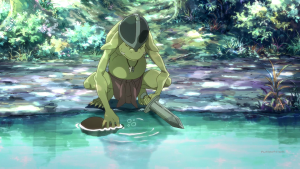
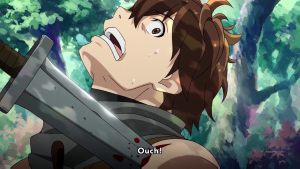
For those who have seen even the second episode, you will know that a portion of the runtime is dedicated to a music-video like sequence. Some might find this jarring, while I think it’s a fantastic idea. Those few minutes are spent (for a couple episodes) as a way to show us 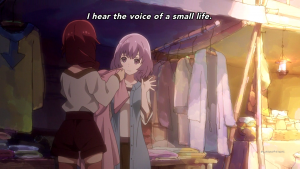 the everyday life of our protagonists. We see them interact with each other, buy clothing, and do a host of “normal, real world” stuff. And this isn’t just evident in the music sequences. At one point, Haruhiro ponders how wonderful it would be to have money to buy fresh underwear. This is an aspect of journeys that can so easily be glossed over in other shows. After a while, the clothing you start an adventure with becomes dirty and ripped, and so you have to buy new ones. But if you aren’t making enough money, you have to make do with what you have. Grimgar shows its characters doing laundry and leaving clothing out to dry.
the everyday life of our protagonists. We see them interact with each other, buy clothing, and do a host of “normal, real world” stuff. And this isn’t just evident in the music sequences. At one point, Haruhiro ponders how wonderful it would be to have money to buy fresh underwear. This is an aspect of journeys that can so easily be glossed over in other shows. After a while, the clothing you start an adventure with becomes dirty and ripped, and so you have to buy new ones. But if you aren’t making enough money, you have to make do with what you have. Grimgar shows its characters doing laundry and leaving clothing out to dry.
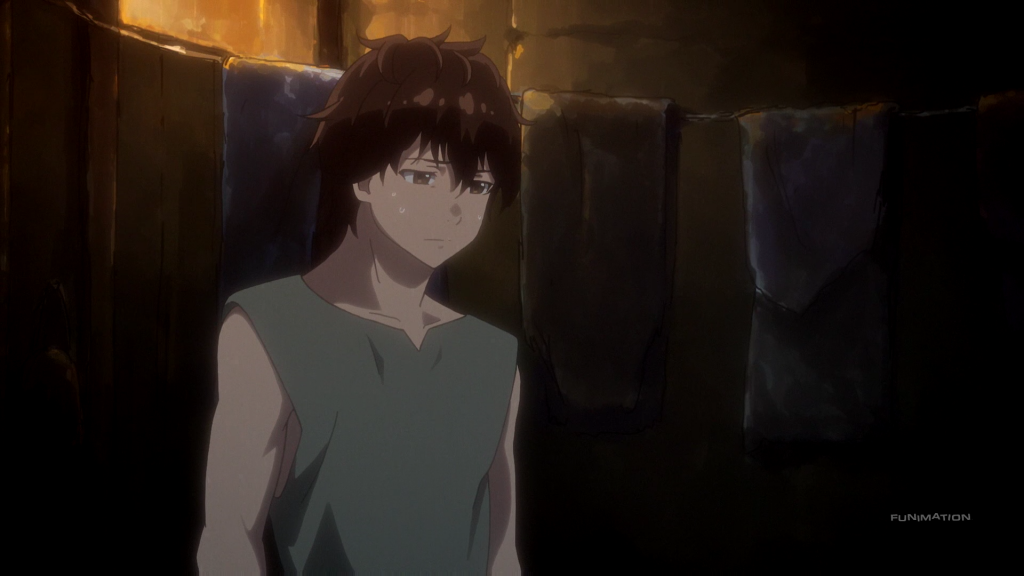
This is just one example of how Grimgar takes it time to show how real world people would handle real world processes in a fantasy setting. It’s slow because it’s electing to try and connect to viewers on a more human level, and flesh out its characters so that they seem more realistic. When we get to see these kind of behind-the-scenes actions and dynamics, we come to care about the characters and their predicaments even more.
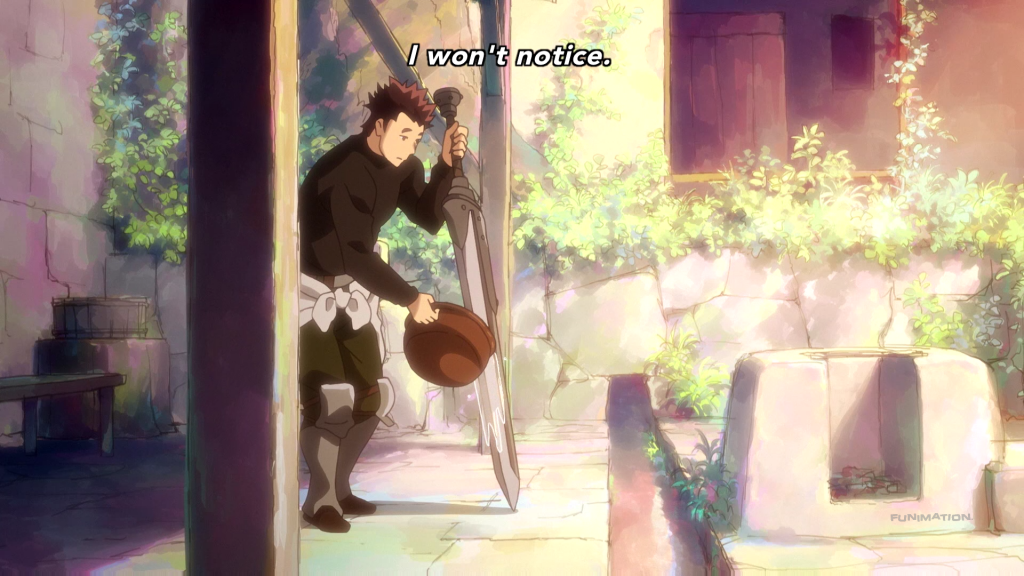
So now, do you see why I like Grimgar of Fantasy and Ash so much? There are things I haven’t mentioned because I am trying to remain as spoiler-free as possible (and probably failing). Of course, the show is absolutely gorgeous, and its score and choice of music help set the mood for each and every scene.
In a day and age where shows move rapidly (not every show, of course), back-story bombs are dropped quickly, and larger conflicts are set up fairly early, Grimgar of Fantasy and Ash is definitely a slow burn, but don’t let that be a deterrent from watching. This is a human story wrapped up in fantasy coating, and for this reason, I find it to be one of the best and most intriguing shows of the winter season.

Featured Sponsor - JAST
The sweetest romance and the darkest corruption, the biggest titles and the indie darlings; for visual novels and eroge, there's nowhere better.
Big thank you to our supporters
From their continous support, we are able to pay our team for their time and hard work on the site.
We have a Thank-You page dedicated to those who help us continue the work that we’ve been doing.
See our thank you page